Match the species in Column I with the type of hybrid orbitals in Column II.
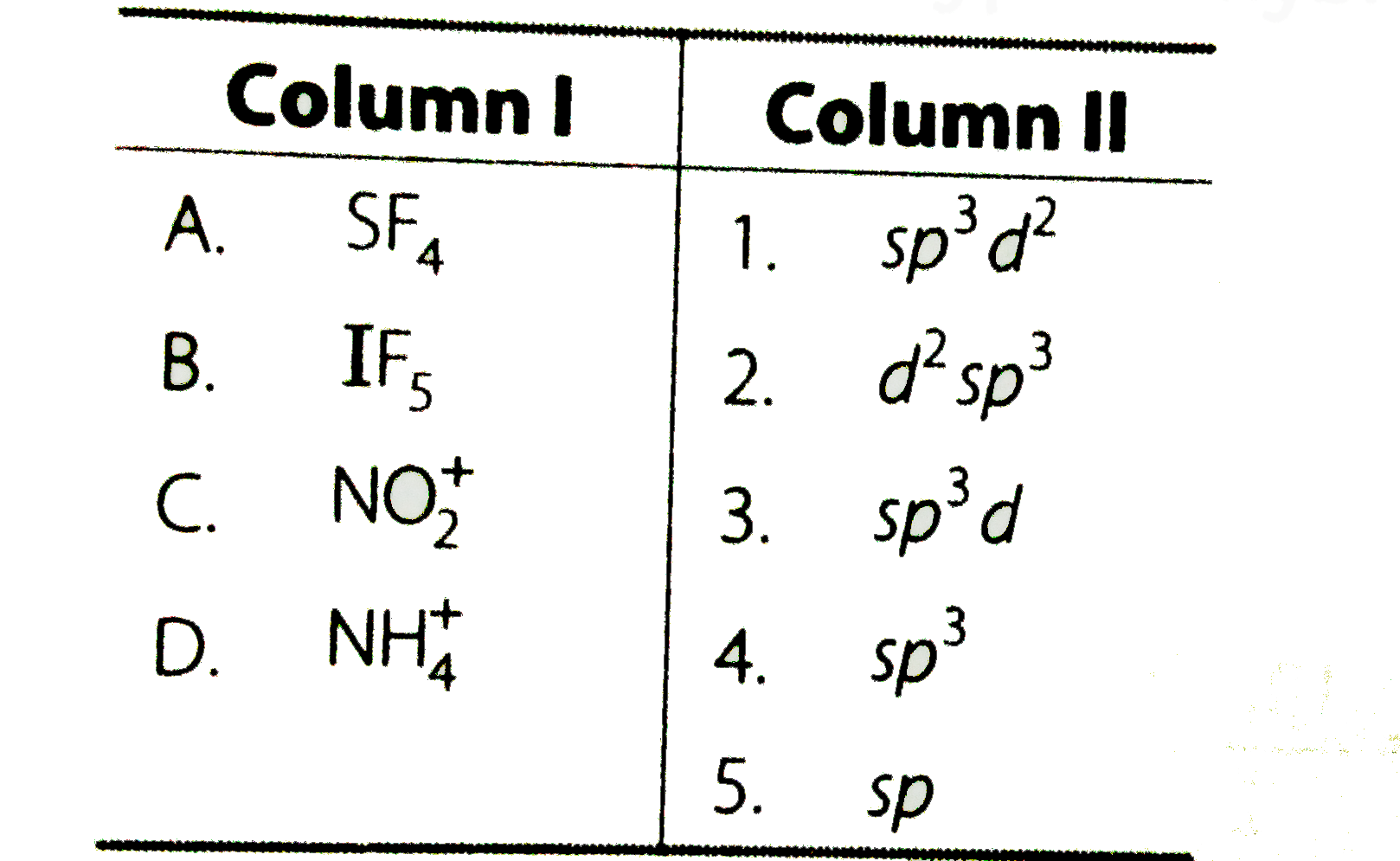
Step by step video & image solution for Match the species in Column I with the type of hybrid orbitals in Column II. by Chemistry experts to help you in doubts & scoring excellent marks in Class 11 exams.
Updated on:21/07/2023Topper's Solved these Questions
- CHEMICAL BONDING AND MOLECULAR STRUCTUREBOOK - MODERN PUBLICATIONCHAPTER - CHEMICAL BONDING AND MOLECULAR STRUCTUREEXERCISE - NCERT (Exemplar Problems) (Assertion and Reason Type Questions)
3 Videos
- CHEMICAL BONDING AND MOLECULAR STRUCTUREBOOK - MODERN PUBLICATIONCHAPTER - CHEMICAL BONDING AND MOLECULAR STRUCTUREEXERCISE - NCERT (Exemplar Problems) (Long Answer Questions)
5 Videos
- CHEMICAL BONDING AND MOLECULAR STRUCTUREBOOK - MODERN PUBLICATIONCHAPTER - CHEMICAL BONDING AND MOLECULAR STRUCTUREEXERCISE - NCERT (Exemplar Problems) (Short Answer Type Questions)
21 Videos
- CLASSIFICATION OF ELEMENTS AND PERIODICITY IN PROPERTIES BOOK - MODERN PUBLICATIONCHAPTER - CLASSIFICATION OF ELEMENTS AND PERIODICITY IN PROPERTIES EXERCISE - UNIT PRACTICE TEST
13 Videos
Similar Questions
Knowledge Check
Match the species in Column I with the bond order in Column II.
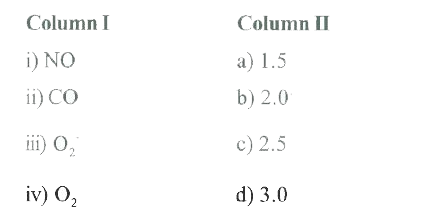 Ai-c,ii-d,iii-a,iv-bBi-a,ii-b,iii-c,iv-dCi-a,ii-b,iii-d,iv-cDi-a,ii-c,iii-e,iv-d
Ai-c,ii-d,iii-a,iv-bBi-a,ii-b,iii-c,iv-dCi-a,ii-b,iii-d,iv-cDi-a,ii-c,iii-e,iv-d
Match the shape of molecules in Column I with the type of hybridisation in Column II.
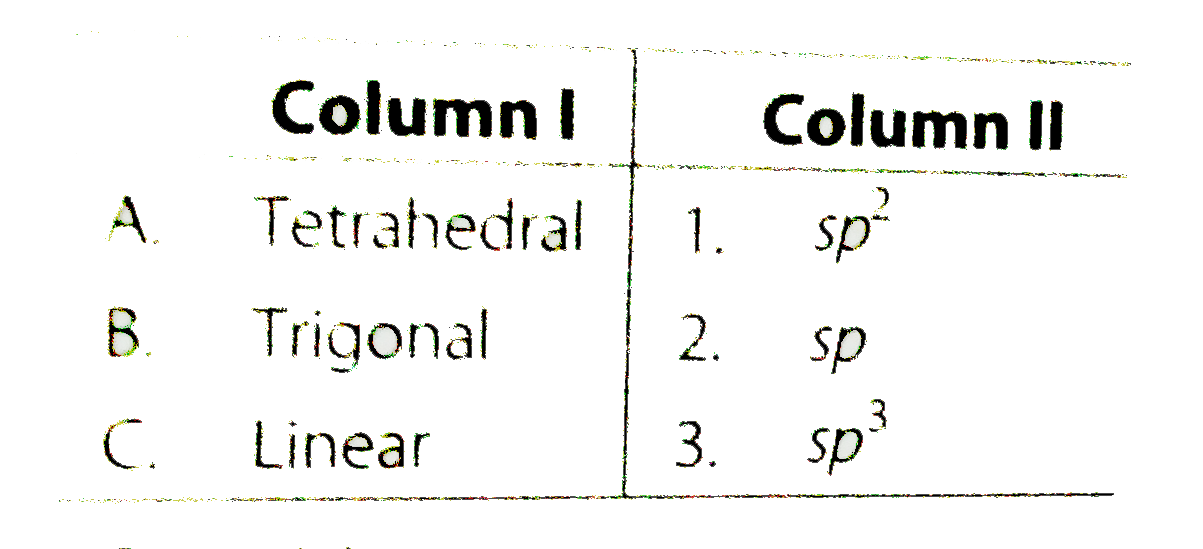
View SolutionMatch the example given in Column I with the type of colloid given in Column II.
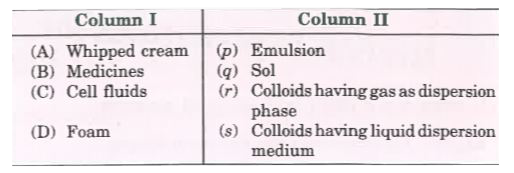
View SolutionMatch the species in Column I with the bond order in Column II.
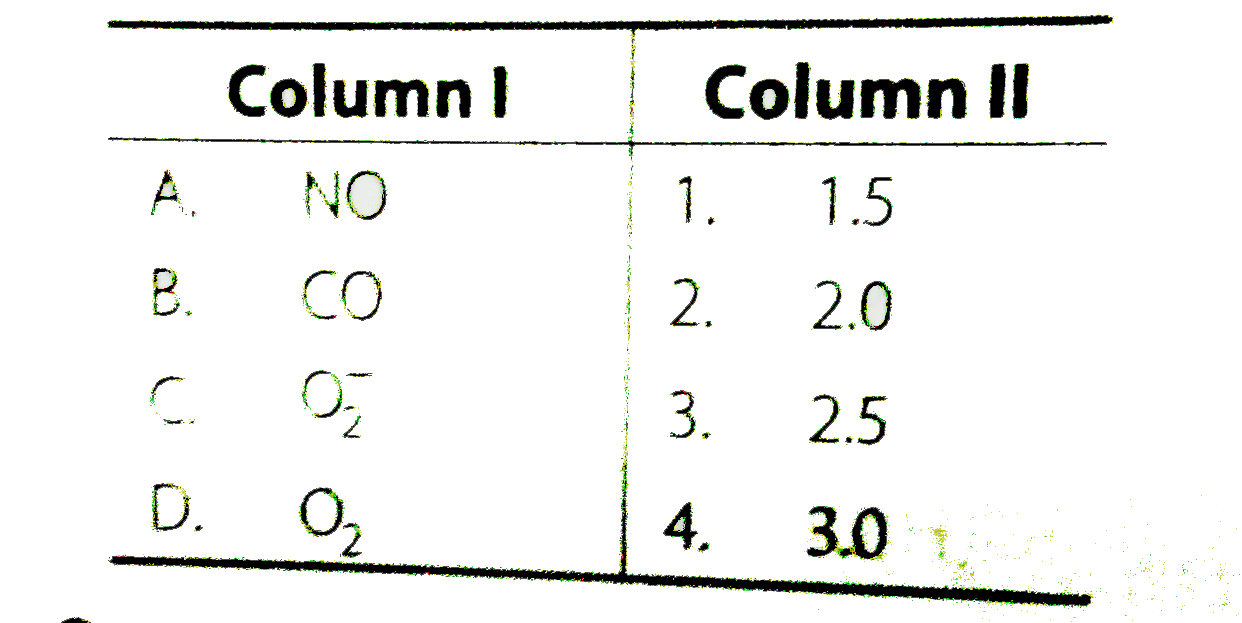
View SolutionMatch the species in Column I with the geometry/shape in Column II.

View SolutionMatch the reactions given in Column I with the types of reactions given in Column II.
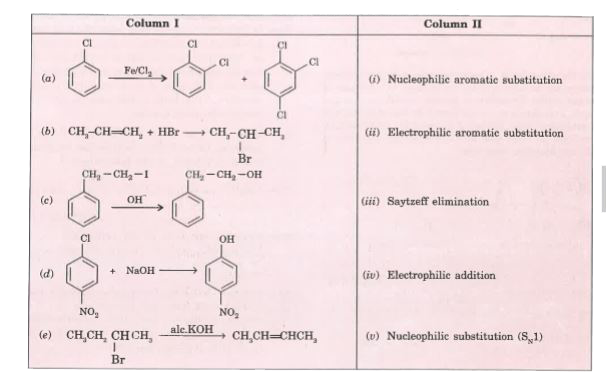
View SolutionMatch the reactions given in Column I with the reaction types in Column II.

View SolutionMatch the reactions given in Column I with the types of reactions given in Column II.

View Solution

